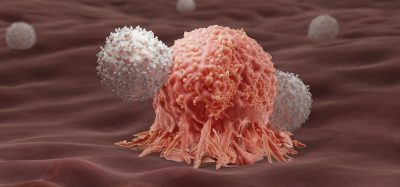ImmunoGen’s IMGN529 demonstrates synergistic activity with rituximab in preclinical models of non-hodgkin lymphoma
Posted: 18 June 2015 | Victoria White
Findings from ImmunoGen’s preclinical assessments of IMGN529 in combination with rituximab have been presented at ICML 2015…


Findings from ImmunoGen’s preclinical assessments of IMGN529 in combination with the CD20-targeting antibody rituximab have been presented in a poster at the 13th International Conference on Malignant Lymphoma.
In the preclinical assessments, IMGN529 exhibited strong synergy with rituximab and other CD20-targeting antibodies in cell lines representative of an array of non-Hodgkin lymphoma (NHL) subtypes including both GCB and ABC diffuse large B-cell lymphoma (DLBCL). Consistent with the in vitro findings, the combination of IMGN529 and rituximab was highly active against DLBCL models in vivo. Synergy was also seen in vitro in a model representative of “double hit” lymphoma, a particularly difficult-to-treat type of DLBCL characterised by deregulation of two different genes BCL2 (or BCL6) and MYC.
ImmunoGen plans to initiate clinical testing of IMGN529 with rituximab later this year
“Rituximab is a standard of care in the treatment of B-cell malignancies and thus it is highly exciting that IMGN529 and rituximab demonstrate synergistic activity in combination in these models,” commented Dr Charles Morris, EVP and Chief Development Officer of ImmunoGen. “We plan to initiate clinical testing of IMGN529 in combination with rituximab later this year to assess the potential benefit of such a regimen for patients with DLBCL.”
IMGN529 is currently in Phase I clinical testing for the treatment of NHL used as a single agent in patients with heavily pre-treated disease. It has demonstrated encouraging evidence of activity, particularly for patients with relapsed/refractory DLBCL. Later this year, ImmunoGen plans to begin assessing IMGN529 used in combination with rituximab for the treatment of relapsed/refractory DLBCL in addition to assessing it as a single agent in DLBCL and chronic lymphocytic leukaemia disease-specific patient populations.
Related topics
Gene Testing, Oncology
Related organisations
ImmunoGen







